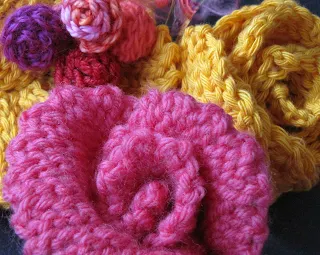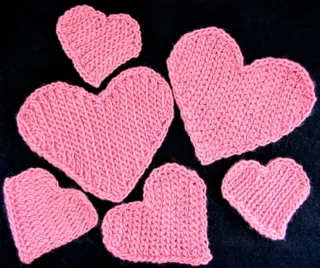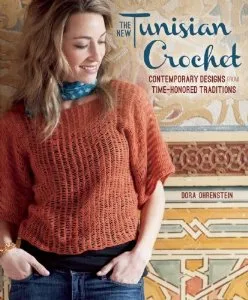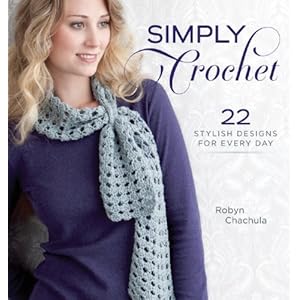 |
| Back-loop Slip Stitch Heart & Front Loop Slip Stitch Heart Update: Slip Stitch Heart pattern at my new blog! |
A sweet surprise is that heart shapes, roses, and other flowers are especially useful ways to try out shaping methods!
 |
| Different Slip Stitches in a Variety of Rose Petal Shapes |
- Scaled up or down to the swatch size I prefer,
- A two-dimensional rendition, or as 3-D sculpted as I wish,
- Recycled later into appliqués, jewelry, patch pockets, pincushions, coasters, etc.
- Practice for sleeve cap shaping and other useful applications.
I've also been curious about how different kinds of slip stitches respond to the shaping methods. Below are hearts in four different slip stitch patterns.
 |
| Four Kinds of Slip Stitches, Crocheted Diagonally and Vertically |
The heart in the lower left corner is the oddest-looking one, and retains a slight curl even after blocking. I'd need to tweak the starting row of this one also. Some of them have a strong natural curl or textural grain.
This same inverse slip stitch type - which doesn't work so well for heart shapes - is perfect for the special kind of curling that a rose petal does!
In this blog post I'm using newer photos taken after I sent out the most recent Crochet Inspirations Newsletter issue #53. It includes a free crochet pattern for a simple slip-stitch-strip rose. See photo of wee cashmere roses below!
 |
| These rose petals have a natural curve, thanks to slip stitches. |
Socks, hats, mittens, and bags as shapes for testing are certainly useful. They're also more time-consuming. So, I start with a heart or a flower swatch that shows promise, and then I try applying the shaping method to a sock heel, or toe, for example.
 |
| Miniature Cashmere Roses |
Right now I'm looking for the best class projects and swatches for students to experience. After that, I'll be able to turn some of the new designs for socks, hats and mittens into crochet patterns for my site. Flowers designs too.












































